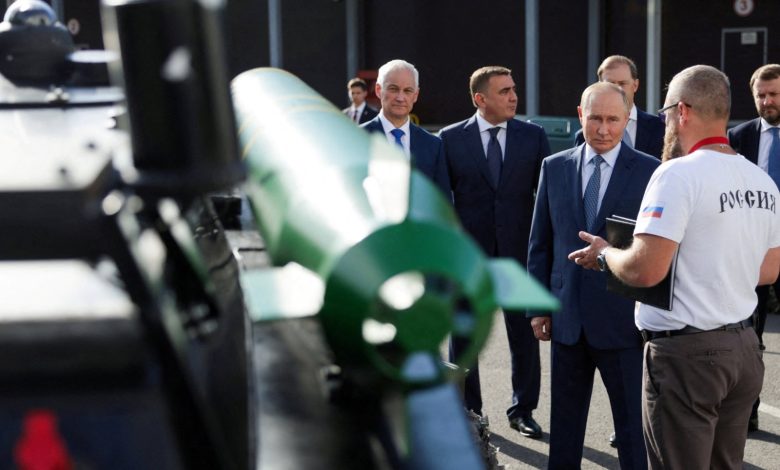Russia proposes sharp hike in defense spending in 2025 budget

Russia is significantly boosting state spending on national defense, lifting it by a quarter in 2025 to 6.3% of gross domestic product (GDP), the highest levels since the Cold War, according to draft budget documents published on Monday.
Defense spending will rise to 13.5 trillion rubles ($145 billion) in 2025, the fourth year of what Russia calls “a special military operation” in Ukraine, up 25% from the 2024 level.
Defense spending will account for 32% of total 2025 budget expenditure of 41.5 trillion rubles. The draft budget was officially submitted on Monday to the State Duma, the lower house of parliament, for review.
In last year’s draft, the government planned to reduce defense spending by 21% in 2025. The reversal shows the scale of state planners’ continued focus on the military.
In 2022, the year the Ukraine war started, Russia spent 5.5 trillion rubles on defense.
“Resources will be allocated and have already been allocated for equipping the armed forces with the necessary weapons and military equipment, paying military salaries, and supporting defense industry enterprises,” the finance ministry said in a statement.
Defense spending is expected to drop to 12.8 trillion rubles in 2026.
About 10% of total defense spending will go to military personnel payments, which have also hit a post-Soviet high with the minimum annual wage in the first year of service at the frontline reaching 3.25 million rubles.
State spending on national security, a separate item from national defense, which also includes financing of the military and security agencies, will amount to 3.5 trillion rubles in 2025.
The total state spending on defense and security will amount to 17 trillion rubles or almost 41% of total expenditure. It will also stand at 8% of the country’s GDP.
The share of GDP is comparable with the estimated military spending share in the late Soviet years when the Soviet Union was fighting a war in Afghanistan while maintaining a vastly larger nuclear arsenal to counter its Cold War adversaries.
Defense spending will exceed twice the amount allocated for social needs, which include pensions, social compensations and subsidies, projected at 6.5 trillion rubles in 2025.
The government will allocate 1.58 trillion rubles or 0.7% of GDP for education and 1.86 trillion rubles or 0.87% of GDP for health care in 2025.
The government has hiked its projection for the 2024 budget deficit to 1.7% of GDP, up from the previous projection of 1.1% and the initial projection of 0.9%. The 2025 budget deficit is seen at 0.5% of GDP.
Russian oil and gas revenues for the state budget are expected to decline in 2025-2027 due to lower commodity prices and tax changes, as the country’s largest gas producer, Gazprom, is set to see its tax burden fall.
Budget revenue from oil and gas sales is set to decline to 10.9 trillion rubles, or 5.1% of GDP, in 2025 from 11.3 trillion rubles expected this year.
According to Finance Minister Anton Siluanov, the share of oil and gas in state budget revenues will stand at 27% of total budget revenues.
“This is lower than in all previous years, and this is good – we are moving away from oil and gas dependency in our budget revenues,” Siluanov told state television.
The Russian ruble is projected to weaken by almost 6% to 96.5 to the dollar on average in 2025, with prices for oil, Russia’s main export commodity, also down to an estimated average of $69.7 per barrel in 2025 from $70 in 2024.






